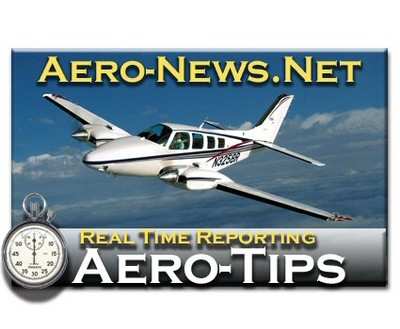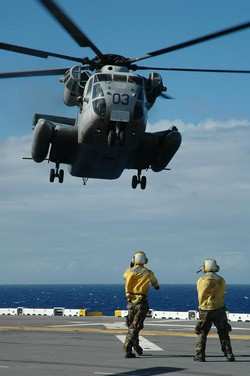Sun, Sep 03, 2006
Aero-Tips!
A good pilot is always learning -- how many times have you heard
this old standard throughout your flying career? There is no truer
statement in all of flying (well, with the possible exception of
"there are no old, bold pilots.")

Aero-News has called upon the expertise of Thomas P. Turner,
master CFI and all-around-good-guy, to bring our readers -- and us
-- daily tips to improve our skills as aviators. Some of them, you
may have heard before... but for each of us, there will also be
something we might never have considered before, or something that
didn't "stick" the way it should have the first time we memorized
it for the practical test.
Look for our daily Aero-Tips segments, coming each day to you
through the Aero-News Network.
Aero-Tips 09.03.06
A reader writes:
Re: AERO TIPS (08.21.06) THAT ELUSIVE TURBINE
TIME
 I know that a helicopter ain't an
airplane! But how does experience carry over into something
civilian from something that has:
I know that a helicopter ain't an
airplane! But how does experience carry over into something
civilian from something that has:
- Retractable, tricycle landing gear
- Turbine engines (twin, 1700 horsepower, computer
controlled)
- Dual autopilots, flight directors, satcom, radar and glass
cockpit
- Twelve passenger seats
- Requires two IFR pilots
- Really, really complicated. Costs more than a whole
six-pack of VLJs
Our reader is obviously completing a rotary-wing military
obligation and wants to turn his (he signed the note; he's male)
government-given talents into a fixed-wing civilian flying
career. Obviously a lot of his experience translates directly
into safe command of an aircraft (not just airplane). But here are
the rules from 14 CFR 61:
- In most cases you can convert your military pilot credentials
into a civilian Commercial Pilot-Rotorcraft certificate with an
Instrument rating. See FAR 61.73. Do it
now, before you get out of the service, because you
have a limited time to get your civilian credentials without having
to start from zero.
- You can then obtain a Commercial certificate for airplanes by
logging 50 fixed-wing hours, including a long VFR cross-country,
several maneuvers and a few other details, then pass a Practical
Test (checkride) in an airplane. FAR 61.129.
- You can convert your Instrument rating to include Airplane
privileges you need to log at least 15 hours of actual or simulated
instrument time in fixed-wing airplanes, including the "long IFR
cross-country" and a checkride. FAR 61.65.
- Assuming you want your Airline Transport Pilot certificate
you'll need to pass the written and amass the experience that
qualifies you for the practical test. You need at least 250 hours
of pilot-in-command time of (fixed-wing) airplanes in a host of
experiences…although up to 100 hours of that time may be in
simulators or approved flight training devices that represent an
airplane. FAR 61.159.
The good news: You can truthfully enter all your rotary-wing
time in your "Total time" column (assuming an employer isn't asking
for "airplane total time") and all your multiengine time in the
"Multiengine" column (if the application doesn't specific "in
airplanes"); all your turbine time counts too (unless an
application specifically says "turbine time in airplanes" or
similar).
Lastly, you may show up for an interview with a fresh ATP
certificate, but your resume and confidence will show that you are
a far more experienced and seasoned pilot than most others with the
same new paper in their pockets. I hope that encourages you.
Aero-tip of the day: When making a
certificates-and-ratings transition look to the regulations for
ways to combine as many of the requirements as necessary, to speed
up the process and make the change as inexpensively as
possible.
More News
Aero Linx: Aviators Code Initiative (ACI) Innovative tools advancing aviation safety and offering a vision of excellence for aviators. The ACI materials are for use by aviation pra>[...]
Make Sure You NEVER Miss A New Story From Aero-News Network Do you ever feel like you never see posts from a certain person or page on Facebook or Instagram? Here’s how you c>[...]
From 2016 (YouTube Edition): Who You Gonna Call When You Have a Rocket Engine that Needs a Spacecraft? While at EAA AirVenture 2016, ANN CEO and Editor-In-Chief, Jim Campbell, sat >[...]
"In my opinion, if this isn't an excessive fine, I don't know what is... The odds are good that we're gonna be seeking review in the United States Supreme Court. So we gotta muster>[...]
Expedite Used by ATC when prompt compliance is required to avoid the development of an imminent situation. Expedite climb/descent normally indicates to a pilot that the approximate>[...]
 ANN's Daily Aero-Linx (04.30.25)
ANN's Daily Aero-Linx (04.30.25) ANN FAQ: Turn On Post Notifications
ANN FAQ: Turn On Post Notifications Classic Aero-TV: Agile Aeros Jeff Greason--Disruptive Aerospace Innovations
Classic Aero-TV: Agile Aeros Jeff Greason--Disruptive Aerospace Innovations Aero-News: Quote of the Day (04.30.25)
Aero-News: Quote of the Day (04.30.25) ANN's Daily Aero-Term (04.30.25): Expedite
ANN's Daily Aero-Term (04.30.25): Expedite




